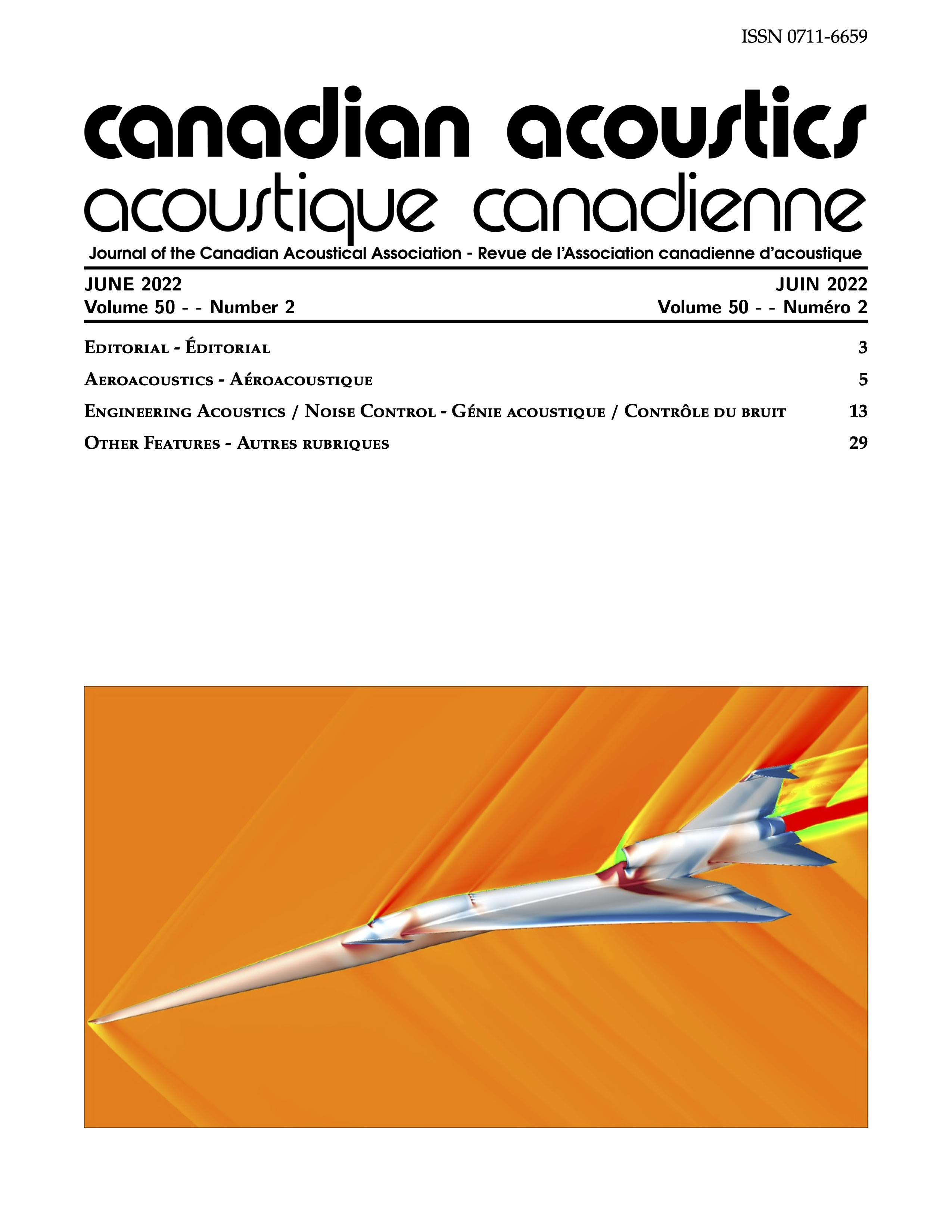Comparison of the Sound Transmission Variability with Published Results on Coupling Loss
Keywords:
Sound transmission, SEA, coupling loss factor, parametric studyAbstract
Whilst most predictions in building acoustics and design invariably use published and readily available models, some attempt to quantify confidence limits that cover most cases would be invaluable. For instance, the parameters (e.g. room dimensions, panel position, room absorption, etc.) are shown to have a substantial effect on Noise Reduction (NR) and Coupling Loss Factor (CLF), the latter being a very important factor for predicting sound transmission using Statistical Energy Analysis (SEA). A Statistical Energy Analysis (SEA) model was implemented and used herein for the prediction of CLFs between two rooms. Thus, the main goal this research is to make an initial parametric investigation for the Coupling Loss Factors (CLFs) and then compare their variability with theoretical upper and lower bound curves previously presented in the literature for structure coupling. The usefulness of SEA as a framework of analysis can be assessed by the estimation of variance and confidence intervals. In addition, the spatial-average mean square sound pressure for each SEA subsystem was estimated via a Component Mode Synthesis (CMS) model developed in a previous paper. In summary, the room acoustic pressures were obtained via a CMS procedure and subsequently used in a SEA model where the equivalent CLFs were evaluated on basis of SEA assumptions. The influence of other SEA parameters, such as modal density and modal overlap was also considered.
Additional Files
Published
How to Cite
Issue
Section
License
Author Licensing Addendum
This Licensing Addendum ("Addendum") is entered into between the undersigned Author(s) and Canadian Acoustics journal published by the Canadian Acoustical Association (hereinafter referred to as the "Publisher"). The Author(s) and the Publisher agree as follows:
-
Retained Rights: The Author(s) retain(s) the following rights:
- The right to reproduce, distribute, and publicly display the Work on the Author's personal website or the website of the Author's institution.
- The right to use the Work in the Author's teaching activities and presentations.
- The right to include the Work in a compilation for the Author's personal use, not for sale.
-
Grant of License: The Author(s) grant(s) to the Publisher a worldwide exclusive license to publish, reproduce, distribute, and display the Work in Canadian Acoustics and any other formats and media deemed appropriate by the Publisher.
-
Attribution: The Publisher agrees to include proper attribution to the Author(s) in all publications and reproductions of the Work.
-
No Conflict: This Addendum is intended to be in harmony with, and not in conflict with, the terms and conditions of the original agreement entered into between the Author(s) and the Publisher.
-
Copyright Clause: Copyright on articles is held by the Author(s). The corresponding Author has the right to grant on behalf of all Authors and does grant on behalf of all Authors, a worldwide exclusive license to the Publisher and its licensees in perpetuity, in all forms, formats, and media (whether known now or created in the future), including but not limited to the rights to publish, reproduce, distribute, display, store, translate, create adaptations, reprints, include within collections, and create summaries, extracts, and/or abstracts of the Contribution.


